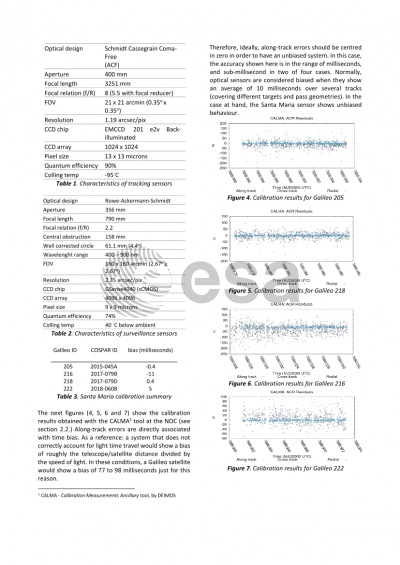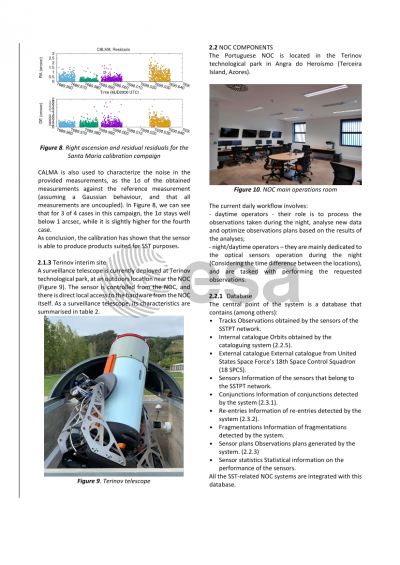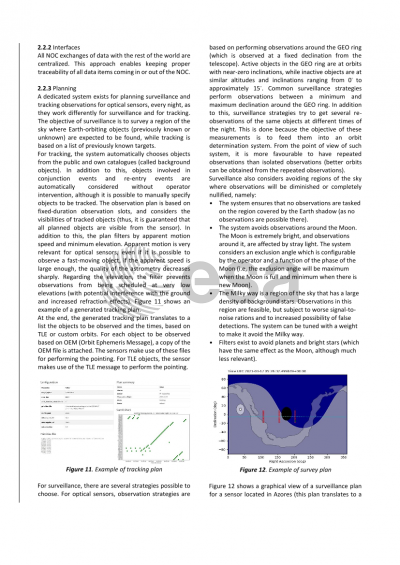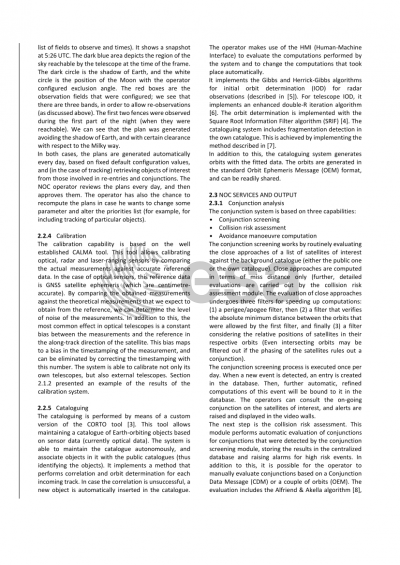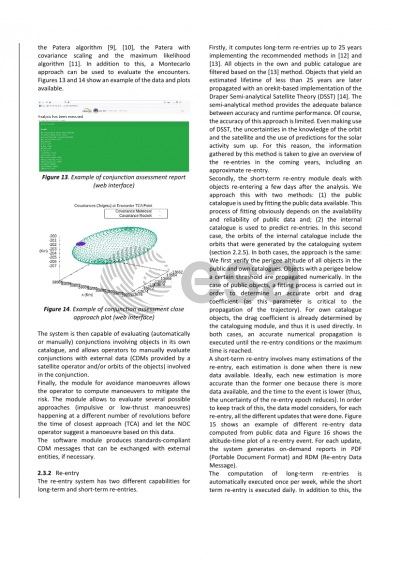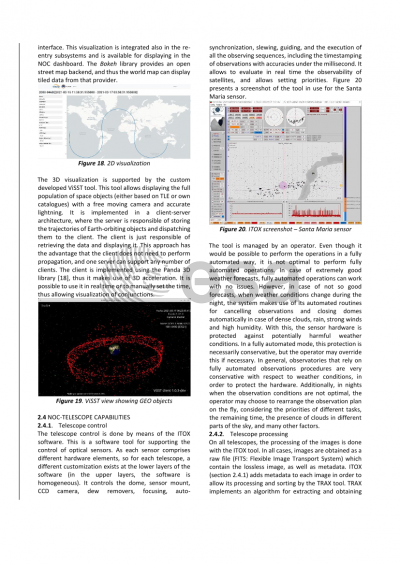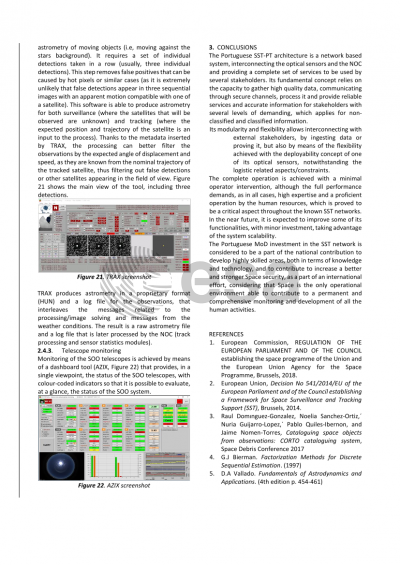Document details

Abstract
The 2000 active satellites, which represent an enormous value by its operational output and by the investment they represent, are becoming threatened by the growing number of space debris and by the expected growing number of active constellations (for example, Space X’s Starlink constellation). This represents a growing need to predict and correct the orbits of the active satellites, avoiding collisions with other inactive satellites or debris, and guarantee their long-term operation and investment.
Notwithstanding the different approaches and inherent comprehension of the Space Situational Awareness (SSA) concept, the common European concept defined in [1] is a holistic approach towards the main space hazards, encompassing collision between satellites and space debris, space weather phenomena, and near earth objects.
“Space Hazards” are in the frame of the Space Surveillance and Tracking (SST) program, created by means of [2], which represents a growing interest in Europe to improve autonomy and to obtain and exploit space situational awareness data (more specifically, SST data). In this context, Portugal, through the Portuguese Ministry of Defense – Armaments Directorate, has been doing an investment with the objective of obtaining SST data autonomously, as well as to produce derived SST information and services from it. Such information will also contribute to the EUSST common effort, namely to the EUSST database (EUSST DB) and services and to other national and international stakeholders. In order to achieve these objectives, an initial network of four state-of-the art space debris optical sensors and a national control centre (NOC) have been set up.
The optical sensors allow extremely high throughput of Earth-orbiting object data, as well as solar system objects (NEOs). Their location is spread in the Portuguese territories, namely mainland and overseas territories (Azores and Madeira), separated by more than 1000kmt far from each other sites, which allows to have, almost at all times, observation capability, no matter the weather conditions. These locations are the western locations in the European mainland and extend far beyond the Europe mainland (by means of the Azores and Madeira territories), allowing to extend the capability of the EUSST network to access some extreme GEO longitudes from European outermost territories. Two sensors are mainly devoted to surveillance activities, whereas the other two are designed for tracking activities. In order to, even extend the observation capability, one of the sensors has been designed with a deployable configuration that will allow a different placement in the future, according to the national and the EUSST needs. The measurement accuracy of these sensors is better than 1 arcsec.
The control centre includes a complete SST suite, including the tasking of sensors, an autonomous SST catalogue, conjunction screening and evaluation, re-entry analysis, fragmentation detection and visualization capabilities. Cataloguing function includes initial orbit determination, routine orbit determination and correlation, and enables the autonomous build-up of a catalogue with no information from outside the Portuguese network. The Conjunction screening allows detecting the conjunctions of one or several objects of interest against the own and external catalogues, while the evaluation implements 5 different algorithms. Re-entry prediction includes a long-term re-entry mode based on long-term (up to 25 years) semi-analytical propagation, while short-term mode works by fitting orbital data, in order to find a re-entry trajectory in the coming days. Fragmentation detection is autonomous, and works by automatically detecting new fragments in the autonomous catalogue and tracing them to their origin. The connection to external entities and databases allows it to work in a closed loop, in which sensor tasking requests are generated from the events of interest, and the processing of generated data produces refined information for these events.
Beyond the SST functionalities, it includes NEO capabilities, by collaborating with the Minor Planet Center and evaluating possible long-term NEO impacts on Earth and its consequences. Space weather capabilities is performed by aggregating observational data provided by third parties.
This paper describes the capabilities and versatility of the Portuguese SST network, and provides samples and discussions on the data products obtained and made available by the NOC.
Referencies
[1] E. Commission, REGULATION OF THE EUROPEAN PARLIAMENT AND OF THE COUNCIL establishing the space programme of the Union and the European Union Agency for the Space Programme, Brussels, 2018.
[2] E. Union, Decision No 541/2014/EU of the European Parliament and of the Council establishing a Framework for Space Surveillance and Tracking Support (SST), Brussels, 2014.
Preview


